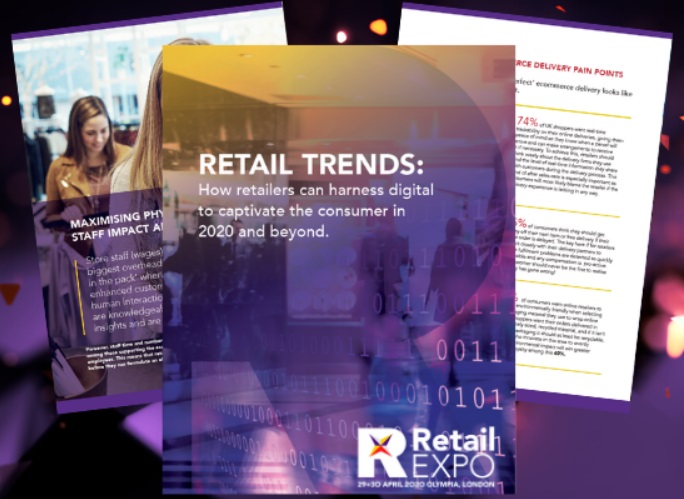Delivery costs, returns, and frictionless payment and data-capture processes are the critical touchpoints for retailers to finetune to provide an excellent customer experience (CX) online, according to a new report.
The data, from RetailEXPO indicates that with fewer than half of UK adults (41%)1 saying they would be comfortable returning to retail environments, even with social distancing measures in place, it’s clear the pandemic has accelerated the shift from shopping in-store to online. With ecommerce sales predicted to increase from 20% to 40% of all retail2, a frictionless, responsive and personalised online offering is critical as consumers’ expectations of ecommerce have been rapidly accelerated.
Original research of 2,000 UK consumers in the ‘Retail Trends: How retailers can harness digital to capture the consumer in 2020 and beyond’ from RetailEXPO shows despite the pivot to online shopping while under lockdown, consumers are still keenly aware of ecommerce’s shortcomings.
The biggest irritation when shopping online was the delivery wasn’t free, with nearly half (47%) of consumer citing this as a pain point, a sentiment that is only likely to increase as consumers look for added value as the covid-19 recession tightens purse strings and as online deliveries take longer with social distancing measures capping warehouse order levels. Retailers need to be transparent about their pricing strategy and explain delivery charge before customers get to the checkout and reinforce the value their chosen fulfilment partners add – be it real-time tracking, in-flight changes to delivery details or delivery to device.
Complex returns processes are cited by over a third (34%) of consumers making it the second largest online pain point. While many retailers have extended their returns policies during lockdown, as non-essential retail stores looks to reopen from 15 June, retailers with an omnichannel presence should look to capitalise on the 56% of shoppers who say they are “much more likely” to shop with online retailers that allow for in-store return4. This will require retailers to put new in-store returns processes in place to ensure that shoppers returning goods can be reassured of new safety measures, without adding unnecessary friction into the process.
25% of shoppers said they wanted retailers to offer ‘buy now-pay-later’ (BNPL) options, indicating they would spend more on ecommerce sites that offered these finance facilities. BNPL provider Klarna reported an increase in both consumer and merchant uptake as covid-19 forced the closure of physical stores. Retailer signups increased by 20% during the first two months of lockdown5 as businesses realise the importance of providing flexible payment terms to drive conversions.
55% of shoppers cite time-consuming processes such as checkout and completing data capture forms as a barrier to shopping online. Amazon’s pioneering one-click ‘Buy-Now’ purchasing option has heightened expectations with a fifth of shoppers saying that retailers should do more to make the online payments process more friction free.
Matt Bradley, Event Director at RetailEXPO, commented: “There is no doubt covid-19 has accelerated the shift to online and, in order to capitalise on this, retailers need to provide a best-in-breed ecommerce offering to their customers. Businesses need to provide customers with a suite of online options, focused around seamless checkout and the most convenient delivery and returns options, to create an intelligent, speedy and low-friction ecommerce journey.”
To find out more about customers want from digital commerce and what this means for retailers and business leaders, download the full report: ‘Retail Trends: How retailers can harness digital to capture the consumer in 2020 and beyond’

